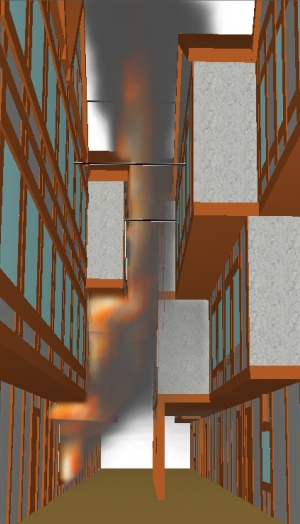
PhD students Eirik Christensen and Yuki Hu with Dr Guillermo Rein

Members of the Imperial Hazelab group in the Department of Mechanical Engineering appeared last week on the Channel 5 programme "The Great Fire".
Dr Guillermo Rein explains:
"We had the pleasure of working with Channel 5 crew to help understand the fire behaviour of the Great Fire of London.
Our most exciting contribution came in the creation of the Imperial Dragon, an experimental apparatus capable of ejecting embers onto a target. This allowed to show how fires are capable of spreading by embers carried by the strong winds landing on buildings far removed from the flames. This is a phenomenon observed in wildfires, and referred as “firedrops” in the accounts of Great Fire of London. Saint Paul Cathedral is thought it had burnt because of embers falling on damaged tiles on the roof.
We also conducted computer simulations of the fire. For the first time ever, FDS, a state of the art computer simulator of fire, was used to model the flame spread in 17th century London. It was found that jetties, a popular building design feature, is likely to have played a significant role in the spread of flames on street level. As the fire rises the flames are pushes out towards the opposite side of the street making ignition of the neighbouring building far quicker.

Computer simulation of London jetties
The simulations also showed that once flames reached above the level of the roofs the influence of the strong wind present at the time of the fire, would tilt the flame; dramatically increasing the spread. It could be said that at this elevation that the fire behaved much like a wildfire rather than a normal building fire, traveling with the topography of the roof tops."
The programme "The Great Fire: In Real Time" aired on Channel 5 on 31 May, 1 and 2 June 2017 at 8 pm. If you've missed it, you can catch up online.
Article text (excluding photos or graphics) available under an Attribution-NonCommercial-ShareAlike Creative Commons license.
Photos and graphics subject to third party copyright used with permission or © Imperial College London.
Reporter

Nadia Barbu
Department of Mechanical Engineering



